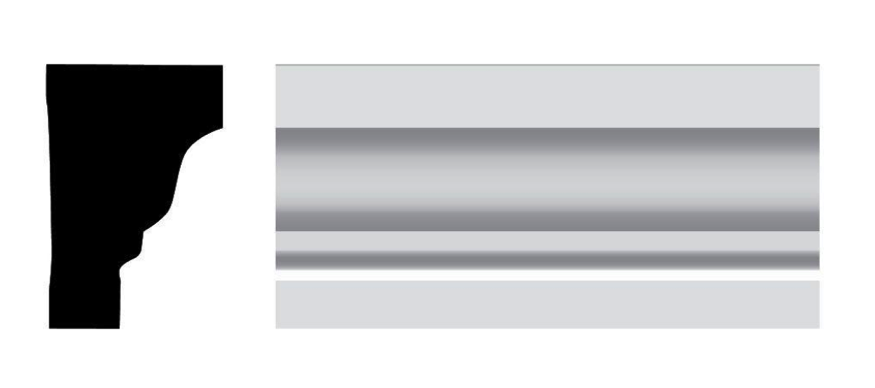Moulding Profile and Shading
To determine the highlights, shades and shadows, it's Imprtant to understand the "profile", or "section" of a piece of moulding as well as the angle of the light.
The example above of a simple crown moulding is lit from the front and about 45˚ from above.
At sharp changes of plane, the edge of a highlight or shadow is crisp. On curved surfaces, the edge of the highlight or shadow is softer and graduated.
- The "local" color is the natural colorand value of the object.
- The "light" color is a light value of the local color used for the most lit portions of the object.
- The "shade" color is a darker value of the local color used for the less-lit portions of the object.
- The "highlight is a very light, opaque value of the local color, mostly used for edges and glossier surfaces. (A "specular reflection" is a pure white, opaque reflection off of a highly gloss surface.)
- The "shadow" is a darker, usually cooler, transparent value often painted over the local color as a glaze. The shadow is cast upon the object or another surface. The color of the ambient, or "fill", light is taken into consideration when mixing the shadow color.
Depending upon the object, the angle of light, and the glossiness of the surface, not all values are necessary in all situations. In the example above we see local, shade, and light, but no highlight or shadow.

